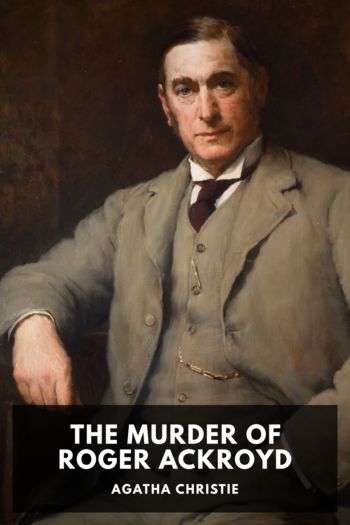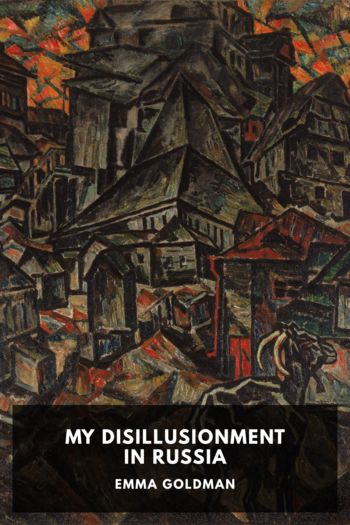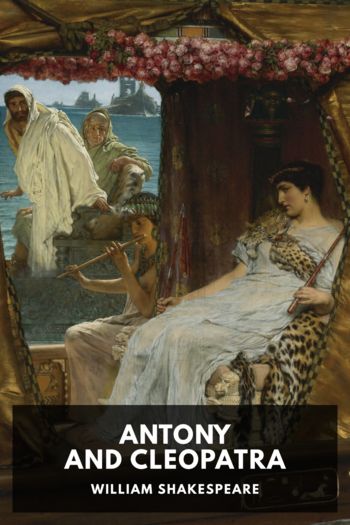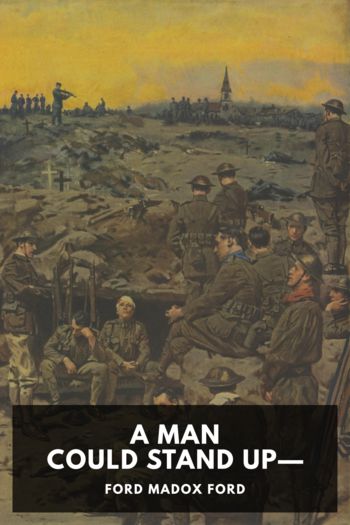
Description
Indiscretions of Archie is a comic novel adapted from a set of short stories serialized in the Strand magazine between March 1920 and February 1921 in the United Kingdom and between May 1920 and February 1921 in Cosmopolitan in the United States. The novel was first published in the United Kingdom on February 14, 1921 by Herbert Jenkins and in the United States on July 15, 1921 by George H. Doran.
The eponymous Archie is Archibald Moffam, a gaffe-prone but affable Englishman who has found himself living in New York City after the end of the First World War, in which he had served with distinction. After a whirlwind romance Archie marries Lucille, the daughter of wealthy hotel owner and art collector Daniel Brewster. Many of the ensuing events revolve around Archie’s attempts to win favor with his new father-in-law.

Description
Hercule Poirot has retired to the English village of King’s Abbot, determined to use his little grey cells in the growing of vegetable marrows. But when Roger Ackroyd, a local businessman and former acquaintance of Poirot’s, is murdered, the man’s niece begs Poirot to investigate in order to clear her fiancé. With Hastings having married and moved to Argentina, Poirot enlists the local doctor to be his assistant and scribe, and the two of them sift through clues to try to discern the ones that will lead them to the killer.
Agatha Christie’s two previous Poirot novels had been generally well-received, but The Murder of Roger Ackroyd made her a household name. Consistently ranked among Christie’s best works, in 2013 it was voted as the best crime novel ever written by the 600-member Crime Writers’ Association of the United Kingdom.

Description
Selina Peake moves from Chicago to a rural Dutch farming area just outside the city to teach in a one room school. As she attempts to fit into the community, she learns about her own strength in adapting to rural life. She marries an uneducated but sweet Dutch farmer named Pervus DeJong and has a son, Dirk, nicknamed “So Big.” She wishes her son to have the same appreciation for the arts and education she has, and although he becomes an architect, his disillusionment with the architectural apprentice system leads him to a career as a successful bond salesman. He later regrets eschewing his architecture career when he meets a beautiful and eccentric artist.
Ferber was not confident in the book’s prospects when it was first published. Nevertheless, it became very popular, won her the Pulitzer Prize for Fiction in 1925, and was later made into three different motion pictures.

Description
Wet Magic was the last novel for children published by E. Nesbit. It was originally serialized in The Strand Magazine in 1912, with a book version published in 1913.
In the book, four brothers and sisters are on their way to a holiday at the beach. While traveling on a train, they’re excited to read about the purported sighting of a mermaid near the coastal town where they’ll be staying, and agree among themselves to join the hunt for this mythical creature. But when they arrive, they discover that the mermaid has been captured and put on show at a circus at the local fairground. After the older children encounter another mermaid in the sea, who implores them to help, they agree they must do what they can to free the captured one. This leads them on to strange adventures.
While Wet Magic has much of Nesbit’s characteristic charm and humor, it doesn’t appear to have been received as well as her other books, nor has it been as frequently reprinted.

Description
In 1919, at the height of the anti-leftist Palmer Raids conducted by the Wilson administration, the anarchist activist and writer Emma Goldman was deported to the nascent Soviet Union. Despite initial plans to fight the deportation order in court, Goldman eventually acquiesced in order to take part in the new revolutionary Russia herself. While initially supportive of the Bolsheviks, with some reservations, Goldman’s firsthand experiences with Bolshevik oppression and corruption prompted her titular disillusionment and eventual emigration to Germany.
In My Disillusionment in Russia, Goldman records her travels throughout Russia as part of a revolutionary museum commission, and her interactions with a variety of political and literary figures like Vladimir Lenin, Maxim Gorky, John Reed, and Peter Kropotkin. Goldman concludes her account with a critique of the Bolshevik ideology in which she asserts that revolutionary change in institutions cannot take place without corresponding changes in values.
My Disillusionment in Russia had a troubled publication history, since the first American printing in 1923 omitted the last twelve chapters of what was supposed to be a thirty-three chapter book. (Somehow, the last chapters failed to reach the publisher, who did not suspect the book to be incomplete.) The situation was remedied with the publication of the remaining chapters in 1924 as part of a volume titled My Further Disillusionment in Russia. This Standard Ebooks production compiles both volumes into a single volume, like the original manuscript.

Description
Antony and Cleopatra begins two years after Julius Ceasar. Mark Antony was supposed to be in Egypt to conduct government affairs on behalf of the Roman Empire. Instead, he fell in love with the beautiful Queen Cleopatra, became her lover, and abandoned his duties to his wife and country. A messenger arrives bearing news that Antony’s wife and brother are dead after attempting to kill Octavius Caesar, and one of Ceasar’s generals, Pompey, is gathering an army against the Roman leaders. Mark Antony has no choice but to return to Rome. When Antony returns to the capital, he argues with Ceasar over his loyalty to the empire and the other triumvirs. The only way that Antony can prove his fidelity to Caesar is to marry his sister, Octavia. The news of this marriage makes its way back to Egypt and its queen.
The play was published in 1606 after the great success of Macbeth. This Standard Ebooks production is based on William George Clark and William Aldis Wright’s 1887 Victoria edition, which is taken from the Globe edition.

Description
In the Italian city of Padua, a young gentleman named Lucentio comes to study at one of the city’s colleges. As is often the fate of men in Shakespeare’s plays, Lucentio falls in love at first sight. The object of his affection, Bianca, is the beautiful and docile daughter of a rich merchant. Her father, Baptista Minola, has declared that no one can marry Bianca until her older sister Katharina has been married first.
Katharina is the polar opposite of her sister: vicious, foul-tempered, sharp-tongued, and stubborn. Any man in her vicinity is at risk of receiving her brutal insults and physical attacks. It’s no surprise that no man wants to marry her—or that’s what she believes, until an equally difficult man named Petruchio arrives in Padua.
This Standard Ebooks production is based on William George Clark and William Aldis Wright’s 1887 Victoria edition, which is taken from the Globe edition.

Description
A Man Could Stand Up— opens on Armistice Day, with Valentine Wannop learning that her love, Christopher Tietjens, has returned to London from the front. As she prepares to meet him, the narrative suddenly shifts time and place to earlier in the year, with Tietjens commanding a group of soldiers in a trench somewhere in the war zone. Tietjens leads his company bravely as they shelter from the constant German strafes, before the narrative again jumps to conclude with an actual Armistice Day celebration.
In this simple narrative Ford creates dense, complex character studies of Valentine and Tietjens. Tietjens, often called “the last Tory” for his staunch and unwavering approach to honor, duty, and fidelity, has changed greatly from the man he was in the previous installments in the series. Ford explores the psychological horror that the Great War inflicted on its combatants through the lens of Valentine’s gentle curiosity about Tietjen’s time on the front: men returned from battle injured not just in body, but in soul, too. The constant, unrelenting shelling, the endless strafes, the clouds of poison gas, the instant death of friends and comrades for no reason at all, the muddy and grim entrenchments where men lived and died—all of these permanently changed soldiers in ways that previous wars didn’t. Now the “last Tory” wants nothing more than to retreat from society and live a quiet life with the woman he loves—who is not his wife.
As we follow Valentine and Tietjens through the last day of the war, we see how the Great War was not just the destruction of men, but of an entire era.

Description
Ernest Hemingway is perhaps the most influential American writer of the twentieth century. Though known mostly for his longer works, he began his writing career with the publication of short stories which helped develop his often-imitated concise, simple, and straightforward style, which stood in stark contrast to the more elaborate prose of many of his contemporaries.
In 1947, during a University of Mississippi creative writing class, William Faulkner remarked that Hemingway “has never been known to use a word that might cause the reader to check with a dictionary to see if it is properly used.” Hemingway famously responded: “Poor Faulkner. Does he really think big emotions come from big words? He thinks I don’t know the ten-dollar words. I know them all right. But there are older and simpler and better words, and those are the ones I use.”
Besides his writing style, Hemingway’s most well-known contribution to the literary landscape was the iceberg theory of writing, developed while composing the short story “Out of Season.” Hemingway later said of the story: “I had omitted the real end of it which was that the old man hanged himself. This was omitted on my new theory that you could omit anything if you knew that you omitted and the omitted part would strengthen the story and make people feel something more than they understood.”
This collection comprises all of the public domain stories published in Hemingway’s short story collections, some miscellaneous stories published in various magazines, and his novellas. With the exception of stories within collections with a thematic link, such as In Our Time, they are arranged in publication order.

Description
Winnie-the-Pooh is a bear that likes honey perhaps a little too much and lives in the Hundred Acre Wood with his animal friends Rabbit, Piglet, Owl, Eeyore, Kanga, and Roo, as well as his people friend Christopher Robin. Winnie-the-Pooh contains several stories of adventures involving Pooh and his friends, including a birthday party, looking for heffalumps, finding a missing tail, and playing a trick on one of their own. Most of them, of course, also involve honey in one way or another.
A. A. Milne wrote for Punch magazine, authored a detective novel (The Red House Mystery), and published several plays, but all of them were largely forgotten after he began writing children’s books about his son’s stuffed toys. Winnie-the-Pooh and his friends captured the public’s imagination, and though Milne was only to publish four books of their adventures, they have lived on in the imagination of children ever since.

Description
Indiscretions of Archie is a comic novel adapted from a set of short stories serialized in the Strand magazine between March 1920 and February 1921 in the United Kingdom and between May 1920 and February 1921 in Cosmopolitan in the United States. The novel was first published in the United Kingdom on February 14, 1921 by Herbert Jenkins and in the United States on July 15, 1921 by George H. Doran.
The eponymous Archie is Archibald Moffam, a gaffe-prone but affable Englishman who has found himself living in New York City after the end of the First World War, in which he had served with distinction. After a whirlwind romance Archie marries Lucille, the daughter of wealthy hotel owner and art collector Daniel Brewster. Many of the ensuing events revolve around Archie’s attempts to win favor with his new father-in-law.

Description
Hercule Poirot has retired to the English village of King’s Abbot, determined to use his little grey cells in the growing of vegetable marrows. But when Roger Ackroyd, a local businessman and former acquaintance of Poirot’s, is murdered, the man’s niece begs Poirot to investigate in order to clear her fiancé. With Hastings having married and moved to Argentina, Poirot enlists the local doctor to be his assistant and scribe, and the two of them sift through clues to try to discern the ones that will lead them to the killer.
Agatha Christie’s two previous Poirot novels had been generally well-received, but The Murder of Roger Ackroyd made her a household name. Consistently ranked among Christie’s best works, in 2013 it was voted as the best crime novel ever written by the 600-member Crime Writers’ Association of the United Kingdom.

Description
Selina Peake moves from Chicago to a rural Dutch farming area just outside the city to teach in a one room school. As she attempts to fit into the community, she learns about her own strength in adapting to rural life. She marries an uneducated but sweet Dutch farmer named Pervus DeJong and has a son, Dirk, nicknamed “So Big.” She wishes her son to have the same appreciation for the arts and education she has, and although he becomes an architect, his disillusionment with the architectural apprentice system leads him to a career as a successful bond salesman. He later regrets eschewing his architecture career when he meets a beautiful and eccentric artist.
Ferber was not confident in the book’s prospects when it was first published. Nevertheless, it became very popular, won her the Pulitzer Prize for Fiction in 1925, and was later made into three different motion pictures.

Description
Wet Magic was the last novel for children published by E. Nesbit. It was originally serialized in The Strand Magazine in 1912, with a book version published in 1913.
In the book, four brothers and sisters are on their way to a holiday at the beach. While traveling on a train, they’re excited to read about the purported sighting of a mermaid near the coastal town where they’ll be staying, and agree among themselves to join the hunt for this mythical creature. But when they arrive, they discover that the mermaid has been captured and put on show at a circus at the local fairground. After the older children encounter another mermaid in the sea, who implores them to help, they agree they must do what they can to free the captured one. This leads them on to strange adventures.
While Wet Magic has much of Nesbit’s characteristic charm and humor, it doesn’t appear to have been received as well as her other books, nor has it been as frequently reprinted.

Description
In 1919, at the height of the anti-leftist Palmer Raids conducted by the Wilson administration, the anarchist activist and writer Emma Goldman was deported to the nascent Soviet Union. Despite initial plans to fight the deportation order in court, Goldman eventually acquiesced in order to take part in the new revolutionary Russia herself. While initially supportive of the Bolsheviks, with some reservations, Goldman’s firsthand experiences with Bolshevik oppression and corruption prompted her titular disillusionment and eventual emigration to Germany.
In My Disillusionment in Russia, Goldman records her travels throughout Russia as part of a revolutionary museum commission, and her interactions with a variety of political and literary figures like Vladimir Lenin, Maxim Gorky, John Reed, and Peter Kropotkin. Goldman concludes her account with a critique of the Bolshevik ideology in which she asserts that revolutionary change in institutions cannot take place without corresponding changes in values.
My Disillusionment in Russia had a troubled publication history, since the first American printing in 1923 omitted the last twelve chapters of what was supposed to be a thirty-three chapter book. (Somehow, the last chapters failed to reach the publisher, who did not suspect the book to be incomplete.) The situation was remedied with the publication of the remaining chapters in 1924 as part of a volume titled My Further Disillusionment in Russia. This Standard Ebooks production compiles both volumes into a single volume, like the original manuscript.

Description
Antony and Cleopatra begins two years after Julius Ceasar. Mark Antony was supposed to be in Egypt to conduct government affairs on behalf of the Roman Empire. Instead, he fell in love with the beautiful Queen Cleopatra, became her lover, and abandoned his duties to his wife and country. A messenger arrives bearing news that Antony’s wife and brother are dead after attempting to kill Octavius Caesar, and one of Ceasar’s generals, Pompey, is gathering an army against the Roman leaders. Mark Antony has no choice but to return to Rome. When Antony returns to the capital, he argues with Ceasar over his loyalty to the empire and the other triumvirs. The only way that Antony can prove his fidelity to Caesar is to marry his sister, Octavia. The news of this marriage makes its way back to Egypt and its queen.
The play was published in 1606 after the great success of Macbeth. This Standard Ebooks production is based on William George Clark and William Aldis Wright’s 1887 Victoria edition, which is taken from the Globe edition.

Description
In the Italian city of Padua, a young gentleman named Lucentio comes to study at one of the city’s colleges. As is often the fate of men in Shakespeare’s plays, Lucentio falls in love at first sight. The object of his affection, Bianca, is the beautiful and docile daughter of a rich merchant. Her father, Baptista Minola, has declared that no one can marry Bianca until her older sister Katharina has been married first.
Katharina is the polar opposite of her sister: vicious, foul-tempered, sharp-tongued, and stubborn. Any man in her vicinity is at risk of receiving her brutal insults and physical attacks. It’s no surprise that no man wants to marry her—or that’s what she believes, until an equally difficult man named Petruchio arrives in Padua.
This Standard Ebooks production is based on William George Clark and William Aldis Wright’s 1887 Victoria edition, which is taken from the Globe edition.

Description
A Man Could Stand Up— opens on Armistice Day, with Valentine Wannop learning that her love, Christopher Tietjens, has returned to London from the front. As she prepares to meet him, the narrative suddenly shifts time and place to earlier in the year, with Tietjens commanding a group of soldiers in a trench somewhere in the war zone. Tietjens leads his company bravely as they shelter from the constant German strafes, before the narrative again jumps to conclude with an actual Armistice Day celebration.
In this simple narrative Ford creates dense, complex character studies of Valentine and Tietjens. Tietjens, often called “the last Tory” for his staunch and unwavering approach to honor, duty, and fidelity, has changed greatly from the man he was in the previous installments in the series. Ford explores the psychological horror that the Great War inflicted on its combatants through the lens of Valentine’s gentle curiosity about Tietjen’s time on the front: men returned from battle injured not just in body, but in soul, too. The constant, unrelenting shelling, the endless strafes, the clouds of poison gas, the instant death of friends and comrades for no reason at all, the muddy and grim entrenchments where men lived and died—all of these permanently changed soldiers in ways that previous wars didn’t. Now the “last Tory” wants nothing more than to retreat from society and live a quiet life with the woman he loves—who is not his wife.
As we follow Valentine and Tietjens through the last day of the war, we see how the Great War was not just the destruction of men, but of an entire era.

Description
Ernest Hemingway is perhaps the most influential American writer of the twentieth century. Though known mostly for his longer works, he began his writing career with the publication of short stories which helped develop his often-imitated concise, simple, and straightforward style, which stood in stark contrast to the more elaborate prose of many of his contemporaries.
In 1947, during a University of Mississippi creative writing class, William Faulkner remarked that Hemingway “has never been known to use a word that might cause the reader to check with a dictionary to see if it is properly used.” Hemingway famously responded: “Poor Faulkner. Does he really think big emotions come from big words? He thinks I don’t know the ten-dollar words. I know them all right. But there are older and simpler and better words, and those are the ones I use.”
Besides his writing style, Hemingway’s most well-known contribution to the literary landscape was the iceberg theory of writing, developed while composing the short story “Out of Season.” Hemingway later said of the story: “I had omitted the real end of it which was that the old man hanged himself. This was omitted on my new theory that you could omit anything if you knew that you omitted and the omitted part would strengthen the story and make people feel something more than they understood.”
This collection comprises all of the public domain stories published in Hemingway’s short story collections, some miscellaneous stories published in various magazines, and his novellas. With the exception of stories within collections with a thematic link, such as In Our Time, they are arranged in publication order.

Description
Winnie-the-Pooh is a bear that likes honey perhaps a little too much and lives in the Hundred Acre Wood with his animal friends Rabbit, Piglet, Owl, Eeyore, Kanga, and Roo, as well as his people friend Christopher Robin. Winnie-the-Pooh contains several stories of adventures involving Pooh and his friends, including a birthday party, looking for heffalumps, finding a missing tail, and playing a trick on one of their own. Most of them, of course, also involve honey in one way or another.
A. A. Milne wrote for Punch magazine, authored a detective novel (The Red House Mystery), and published several plays, but all of them were largely forgotten after he began writing children’s books about his son’s stuffed toys. Winnie-the-Pooh and his friends captured the public’s imagination, and though Milne was only to publish four books of their adventures, they have lived on in the imagination of children ever since.